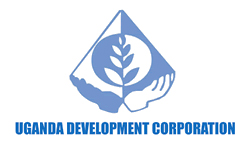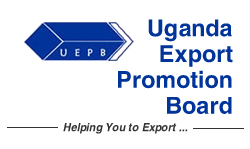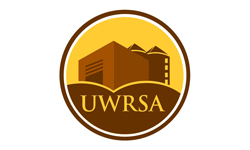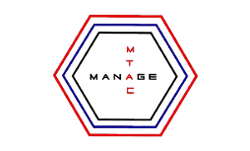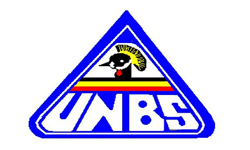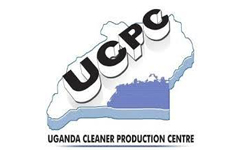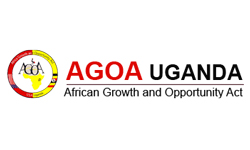Overview of the MTIC’s National Response Strategy for Elimination of Non-Tariff Barriers (NRSE-NTBs)
1.0 Introduction
EAC Commitment to NTBs Elimination
The East African Community Partner States under the Customs Union protocol which entered into effect on January 1, 2005 – committed to “remove, with immediate effect, all the existing non-tariff barriers to the Trade and thereafter, not to impose any new non-tariff barriers. The Partner States also committed to “formulate a mechanism for identifying and monitoring the removal of non-tariff barriers.” Since then Partner States have been negotiating to develop a wide range of protocols for implementing the Customs Union. Studies have been undertaken by Partner States, private sector and other civil society organizations, all aimed at identifying and classifying non-tariff barriers and ensuring an effective monitoring mechanism.
2.0 Background to MTIC’s Development of National Response Strategy on Elimination of Non-Tariff Barriers (NRSE-NTBs) Programme
The NRSE-NTBs programme in Uganda is derived from the contextual situation of the EAC. And in this context, Non-Tariff Barriers are defined as laws, regulations, administrative and technical requirements other than tariffs imposed by a Partner State, whose effect is to impede trade . The legal obligation and mandate to eliminate Non-tariff barriers amongst EAC Partner States is embedded in Article 13 of the East African Community Customs Union, which is to the effect that each Partner State agrees to remove with immediate effect, all the existing non-tariff barriers to the importation into their respective territories of goods originating in the other Partner States, and thereafter, not to impose any new non-tariff barriers. The Protocol obliges Partner States to formulate a mechanism for identifying and monitoring the removal of non-tariff barriers. Resulting from this work, the EAC Secretariat developed the EAC Time-Bound Program, 2008 for Elimination of reported Non-tariff Barriers (NTBs) for use by all Partner States. Indeed, the EAC NTB Monitoring Committee has been established at EAC level comprising the National Monitoring Committees (NMCs) of each of the five EAC Partner States. In Uganda, the NMC is hosted and coordinated in by MTIC
However, despite the existence of the mechanism, NTBs still plague the EAC, which is against the spirit of integration and the legal obligations enshrined in the legal instruments of the Community. A study on the existence and nature of NTBs along Uganda’s principal trade route (Kampala-Malaba-Nairobi-Mombasa) by the Economic Partnership Agreement Related Trade and Private Sector Support (EPA TAPSS) Programme in MTIC conducted in late 2010 found the persistence of three broad categories of NTBs; ‘administrative/institutional’, ‘legal and regulatory’, and ‘infrastructural’. Ironically, even when these NTBs have been mentioned at the EAC level and commitment made to remove them, they still persist. This implies that the current mechanism falls short in some aspects, and thus needed to be made stronger and ‘delivery-oriented’
The specific nature of most Non-Tariff Barriers frequently result in studies that record all the complaints from traders/producers or government officials. Sometimes the reports try and quantify the frequency of complaints. A number of recent studies have sought to quantify the price impact of specific measures through a range of techniques. Such work is useful in documenting the problem and focusing policy attention on the importance of addressing NTBs as well as removing tariffs in order to create an effective single market . The Mechanism has two forms for identifying, recording and reporting NTBs. Form 1 is used by commercial drivers and clearing and forwarding agents, while Form 2 is used by NMCs for reporting to the EAC Secretariat on actions taken to correct the NTBs.
MTIC’s Response and Elimination Efforts of NTBs
The Ministry of Trade, Industry and Cooperatives, Department of Internal Trade has documented part of the progress towards “…….implementation of the Non-Tariff Barriers (NTBs) monitoring mechanism. Monthly National Monitoring Committee (NMC) meetings were held to record and discuss existing NTBs and also decide on collective measures. The NMC has put in place structures at some border districts to monitor NTBs. These structures also replicate the functions of the NMC. The NTB monitoring forms to be filled by concerned traders have been put at border posts of Mutukula, Katuna, Malaba and Busia.
Although the elements of a monitoring NTB mechanism have been established, the information and dialogue, in these structures, while necessary, remain insufficient in achieving compliance on the elimination of NTMs and preventing the emergence of new NTBs which often requires the threat of legal sanction with penalties for non-compliance.
Development of a National Response Mechanism for Uganda was considered a pragmatic approach to support the monitoring mechanism, but also provide a platform for action-based internal resolution of NTBs. Further, the internal country institutional coordination necessary to respond to NTBs while provided for in the terms of reference of NMCs has remained weak. The national response mechanisms seeks to strengthen inter-institutional coordination, and establish a more efficient reporting and recording system, which will enhance the work of the NMC.
The EAC Secretariat currently lacks the mandate (and capacity) to investigate and make rulings on reported NTBs. Further there is no provision for sanctions against any member that fails to comply with commitments to reduce and remove NTBs. However, there is an initiative currently underway at the EAC to develop an enforcement and dispute resolution mechanism. Within the existing framework based on cooperation and dialogue EAC Partner States face specific challenges among which are:
(i) Very slow response times to complaints from Partner States for those NTBs that have been identified;
(ii) Weak Capacity and shortage of personnel and resources to effectively resolve the NTBs;
(iii) National Monitoring Committees are weak and largely ineffective. They receive, discuss complaints but are not able to resolve them;
(iv) A shortage of detailed case studies documenting the adverse impact of NTMs on trade. Recent work by the Private Sector Federation in Rwanda is a positive exception and the decision of the EAC Secretariat to post a copy on its website is very welcome;
(v) Improving dialogue and coordination between the EAC Partner States at the EAC level and also bilaterally; and
(vi) Intra country institutional coordination of government agencies often with conflicting operational procedures and mandates.
(vii) The capacity and interest of businesses and the private sector associations in advocating NTB removal is still inadequate and largely limited to grumbling with no definite systematic channels.
This background presented the basis from which Uganda’s NTB National Response Mechanism was founded; the core objective being to introduce a real time information capture, improve internal inter institutional coordination; reduce response time to resolution of in-country incidence of NTBs. It was anticipated that efficient implementation will lead to reciprocal action by other EAC Partner States. Further, it was intended to directly improve the efficiency and effectiveness of the NTB NMC.
3.0 The NRSE-NTBs Programme
The NRSE-NTBs is robust facilitative programme with the role and mechanism for coordinating all aspects of NTB elimination, including institutional, legal/regulatory, advocacy and reporting. The focus of the programme is on the different institutional mandates that contribute to continuous manifestation of NTBs. It’s multi-agency in approach and included both private sector and public sector entities in reporting, responding and eliminating NTBs.
The NRSE-NTBs programme has a secretariat housed in the MTIC. The secretariat supports the NMC, co-chaired by both public sector and private sector representatives to effectively deliver on its mandate.
3.1 Key Strategic Interventions Areas
The NRSE-NTBs programme’s strategic interventions areas relate to;
i) Establish an Information Exchange Facility;
ii) Development & Implementation of NTB Elimination Communication & Advocacy Strategy;
iii) Institutional Coordination for removal of NTBs; and,
iv) Re-alignment of National Laws & Regulations.
4.0 Beneficiaries of the Program
- The Public Sector especially those government Ministries, Departments and Agencies that are involved in Trade Facilitation
- The Private Sector involved in trade facilitation like clearing agents, transporters, financial and insurance institutions among others
- The Civil Society,
- EAC Secretariat and all Partner States
- The Academia and
- The Media
5.0 The NTB Reporting System
• The System was launched on 31st July 2014 by the Minister of Trade Industry and Cooperatives Hon Amelia Kyambadde.
•The NTB reporting System is a web and phone based real time reporting system that will enhance reporting and resolution of NTBs.
IT can be accessed both by web over the internet and USSD using the phone.
The reports made are simultaneously shared by the Ministry and the Agency that is imposing the NTB.
For example if the problem is at a weighbridge, the report is simultaneous shared by the Ministry and UNRA for quick resolution.
Access is by pressing *201# and following prompts to log complaints or clicking http:// www.ntbtool.mtic.go.ug
click here to access website: NTB REPORTING SYSTEM
5.0 Contact:
The Programme Manager
The NRSE-NTBs Programme
3th Floor Room 320, Farmers House, Parliament Avenue,
P.O Box 7103
Kampala, Uganda.
Email: eatwine@mtic.go.ug

